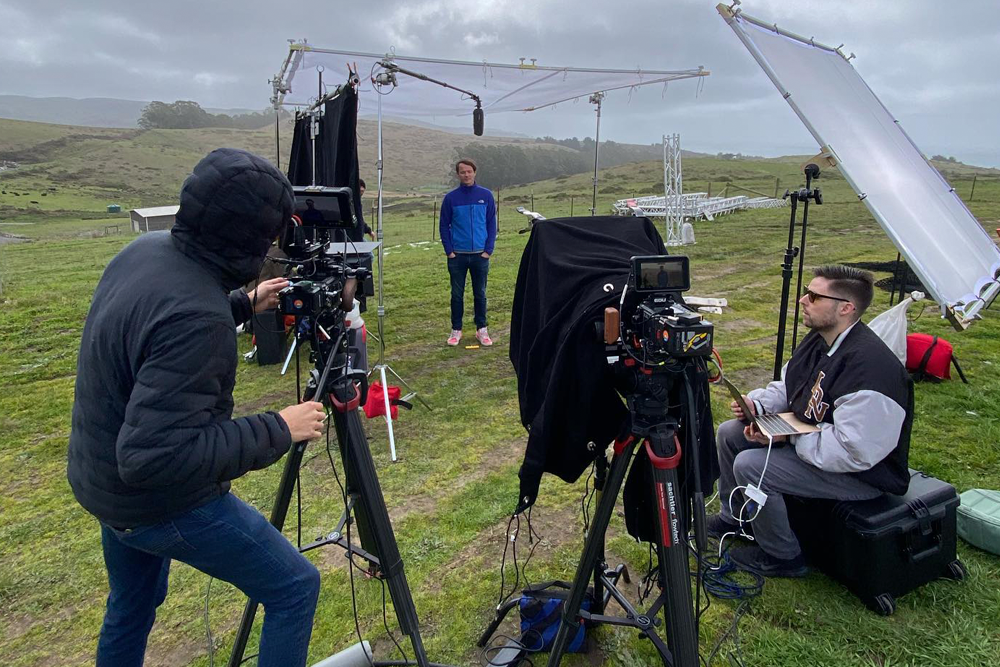Difference Between Commercial and Corporate Video: Key Distinctions Explained
Difference Between Commercial and Corporate Video: Key Distinctions Explained
Blog Article
Discovering the Distinctions: Commercial Vs Company Videos in the Marketing World
In the vast landscape of advertising methods, the application of video clips has actually come to be a pivotal tool for services aiming to engage with their audiences. However, when it concerns creating video clip material, the distinctions in between business and company videos play an essential duty in shaping the total advertising and marketing strategy. Recognizing the subtleties in between these 2 forms of video clip web content is vital for business seeking to properly share their message and connect with their target group. As we dive into the realm of commercial versus corporate videos, it ends up being noticeable that each serves an one-of-a-kind purpose in the marketing world, catering to various objectives and audience choices. video marketing.
Objective and Target Market Placement

In commercial video clips focused on promoting products or solutions, the purpose is commonly centered around driving sales, increasing brand name recognition, or showcasing unique selling points. Therefore, the material must be aesthetically enticing, succinct, and persuasive to capture the audience's attention and motivate them to take activity. Comprehending the target market's demographics, habits, and discomfort points is critical for creating a compelling industrial video clip that resonates with possible clients.
On the various other hand, business videos serve a different purpose, such as internal interactions, training, or highlighting firm society. These video clips are tailored to employees, stakeholders, or the general public, aiming to educate, motivate, or inform. By lining up the video clip's objective with the details audience's expectations and interests, companies can effectively communicate their message and construct more powerful connections with their stakeholders.
Web Content and Messaging Differences
In crafting both corporate and industrial videos for advertising and marketing functions, a crucial facet that differentiates the two depend on the material and messaging techniques used to successfully engage with their particular audiences. Business videos are tailored in the direction of advertising a service or product to drive sales. Consequently, the content in business videos has a tendency to be more convincing, concentrating on highlighting the special selling factors and benefits of the offering in an exciting manner. The messaging in industrial videos is usually succinct, impactful, and developed to stimulate feeling or develop an unforgettable impression swiftly.
On the other hand, corporate video clips are intended at developing brand identification, developing reputation, and cultivating connections with stakeholders. The messaging in corporate video clips is commonly academic, transparent, and intended at building trust fund and commitment among the target market.
Branding and Storytelling Strategies
Properly incorporating branding and storytelling strategies is critical in developing engaging industrial and company videos that reverberate with target audiences and drive desired advertising and marketing results. In the world of commercial video clips, branding plays a crucial duty in establishing a distinctive identification for a product and services. With branding components such as slogans, colors, and logos, commercial videos aim to create a solid association in between the brand name and the viewer, cultivating brand name recognition and commitment.
On the various other hand, company videos frequently concentrate video production on narration strategies to humanize the brand and develop emotional links with the audience (difference between commercial and corporate video). By weaving narratives that highlight the firm's values, mission, or impact, company videos aim to involve viewers on a much deeper degree, constructing count on and reliability for the brand
Successful video clips, whether business or commercial, strike an equilibrium in between branding and storytelling, making certain that the brand name message is shared efficiently while likewise reverberating with the audience on a personal and psychological degree. By leveraging these methods purposefully, marketing professionals can develop impactful video clips that leave a long-term impact and drive meaningful results for their brand names.
Circulation Networks and Techniques
Having actually established the significance of branding and narration strategies in creating impactful business and corporate videos, the focus now changes in the direction of exploring Distribution Channels and Approaches in efficiently engaging and reaching target audiences. For industrial video clips, platforms like YouTube, social media, and sites are prominent selections due to their wide reach and engagement possibility. Methods like targeted advertising and marketing, influencer collaborations, and search engine optimization can further magnify the reach and influence of both business and industrial video clips, ensuring they reverberate with the desired target market and drive wanted activities.
Determining Success and ROI
Accomplishing a clear understanding of the efficiency and roi (ROI) of video marketing initiatives is crucial for organizations aiming to enhance their strategies and make best use of results. Measuring the success of company and business videos includes analyzing numerous key performance indicators (KPIs) such as sights, interaction rates, click-through rates, conversion prices, and general effect on brand name recognition and sales.
To identify ROI, services need to compare the costs of advertising the video and developing web content versus the generated revenue or various other preferred end results. Tracking devices like Google Analytics, social networks understandings, and video organizing systems give valuable information for analyzing the performance of video clip campaigns. Furthermore, performing surveys or collecting comments from viewers can supply qualitative insights right into exactly how the audience perceives the videos.

Verdict
In final thought, understanding the differences in between commercial and business videos is crucial in the advertising realm. It is imperative for marketing experts to identify these distinctions in order to produce successful video clip marketing campaigns.
When it comes to producing video clip material, the distinctions between commercial and business videos play an important function in forming the total marketing strategy. As we dive into the realm of business versus industrial video clips, it becomes obvious that each offers an unique purpose in the marketing realm, catering to various purposes and target market choices.
In crafting both commercial and company video clips for advertising functions, a crucial aspect that distinguishes the two lies in the material and messaging techniques employed to efficiently engage with their corresponding target markets.Effectively incorporating branding and storytelling strategies is crucial in producing engaging industrial and corporate video clips that resonate with target audiences and drive desired advertising results. Tracking tools like Google Analytics, social media understandings, and video clip hosting systems give useful information for assessing the performance of video clip campaigns.
Report this page